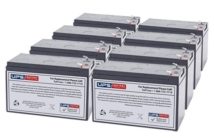Electromagnetism is a fundamental force in nature consisting of the elements electricity and magnetism. It is also referred to as electromagnetic force. The interaction of electrically charged particles and uncharged magnetic force fields with electrical conductors creates the electromagnetic fields. Devices that produce an electromagnetic field when electricity is applied are called electromagnets.
The fundamental way to create magnetic field is by inducing electric current through a copper wire coiled around an iron core. It will then magnetize or attract things made of steel or iron. By controlling the flow of electric current in an electromagnet, the strength of the magnetic field can also be controlled. The copper and iron are made up of atoms. When there is no electric current, all the atoms in the iron core are in their natural state and are not pointing in any particular direction. When electric current is induced, the magnetic field realigns the atoms all in the same direction in the iron core. This alignment causes the atoms to be magnetized, the strength of which can be increased or decreased by controlling the flow of electric current.
Electromagnetic Field
Another phenomenon related to electromagnetism is electromagnetic induction. By moving a wire through a magnetic field (or in between the north and south poles of a magnet), electromagnetic effect occurs and then creates an electric current. By changing the strength of the magnetic field, the magnitude of current is also changed.
Electromagnetic Induction
History
Electromagnetism was first realized in 1820 by Hans Christian Oersted. In his setup, a battery was used to supply electric current to a compass. Whenever the electric current was switched on and off, the needle deflected from the magnetic north. This activity convinced Orsted that magnetic fields radiate from all sides of a wire carrying electric current.
It was Michael Faraday, a researcher and inventor, who pioneered important theories and designs in the area of electromagnetism. He discovered electromagnetic induction and electrolysis. His discovery of the electromagnetic rotary devices led to the invention of the electric motor, a device powered by electricity. Faraday was also the first scientist to establish the relationship between magnetism and rays of light.
In 1873, James Maxwell conducted a series of experiments to further confirm the relationship between electricity and magnetism. He determined the presence of magnetic poles as a result of the interaction between positive and negative electrical charges induced through a wire. Maxwell extended the works of Faraday and built the set of equations that became the basis of all modern theories of electromagnetism.
Practical Use
One important application of electromagnetism is on electrical appliances that use an electric motor. Electric motor consists of magnets that create rotational movement when electricity is supplied. Magnetic recording devices like computer hard disk drives and video cassette recorders (VCRs) also rely on electromagnets. Tiny bits of metal inside these devices are being magnetized in order to save and retrieve information. Electromagnets are also used in doorbells and speakers. Electromagnets are widely used in various fields and industries and they play a very important role in our daily life.
Related articles:
Hans Christian Oersted (1777-1851): Pioneer of Electromagnetism





